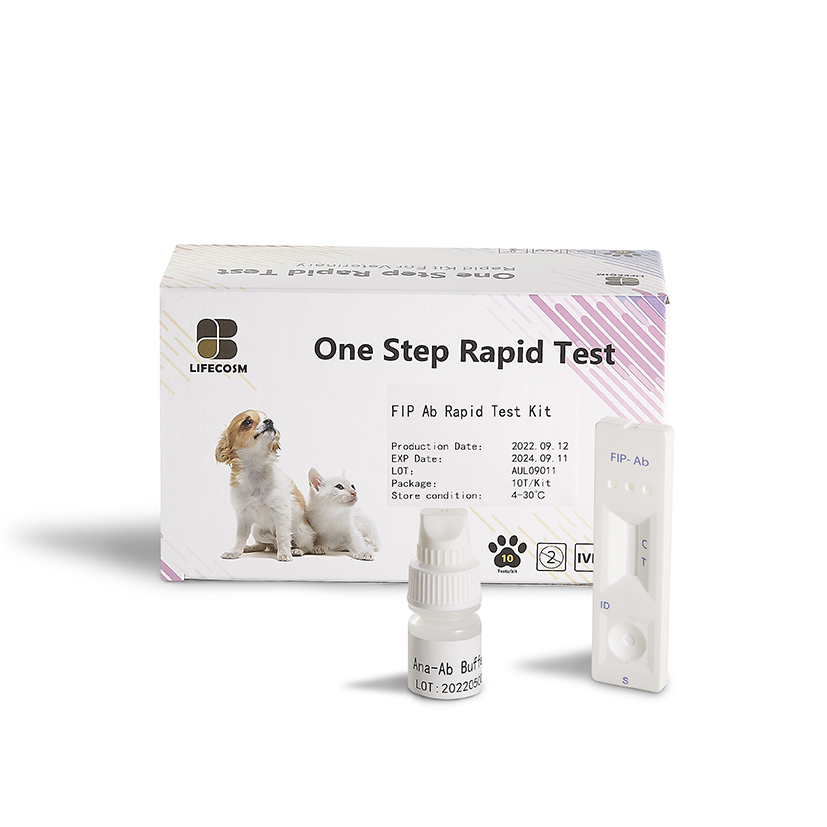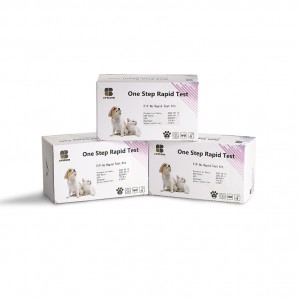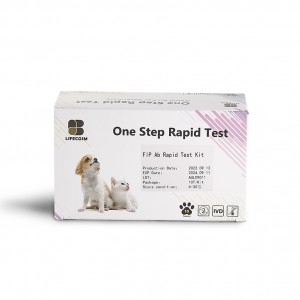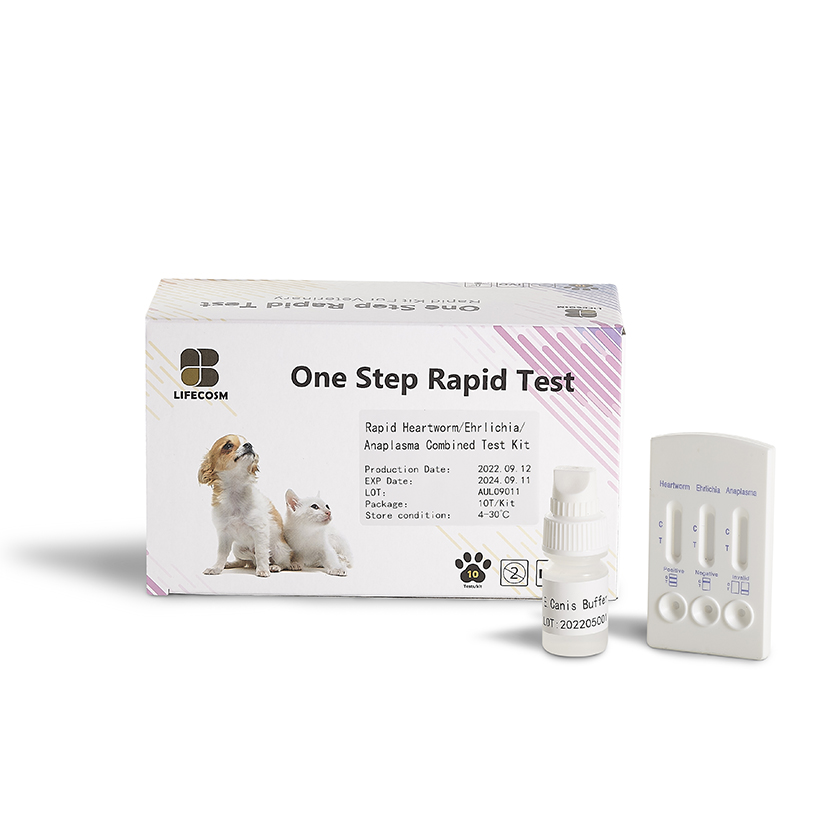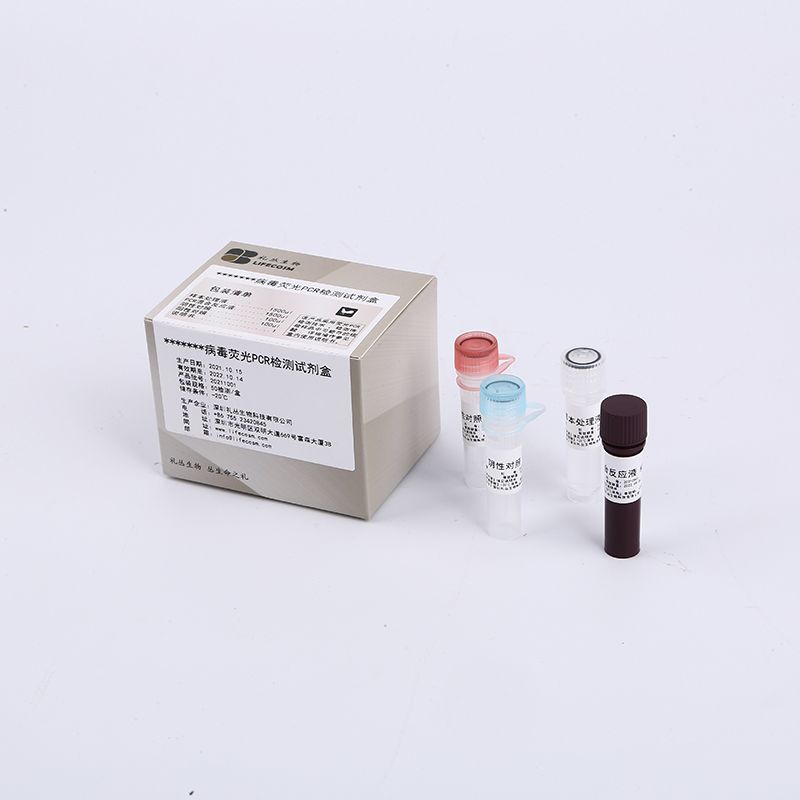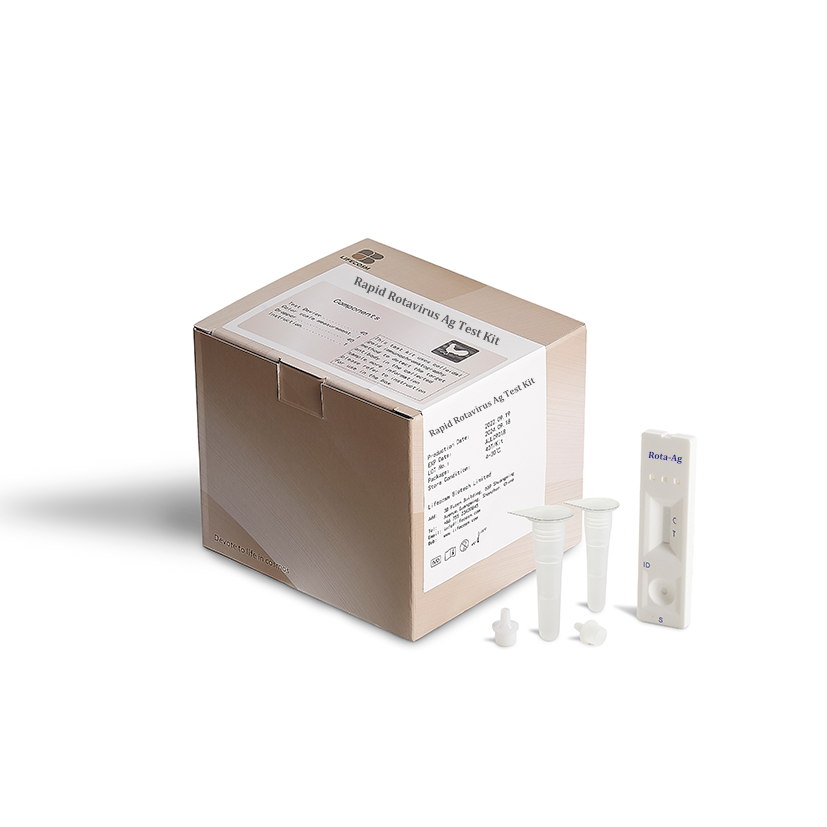
Products
Lifecosm Feline Infectious Peritonitis Ab Test Kit
FIP Ab Test Kit
|
Feline Infectious Peritonitis Ab Test Kit |
|
| Catalog number | RC-CF17 |
| Summary | Detection of specific antibodies of Feline Infectious Peritonitis Virus N protein within 10 minutes |
| Principle | One-step immunochromatographic assay |
| Detection Targets | Feline Coronavirus Antibodies |
| Sample | Feline Whole Blood, Plasma or Serum |
| Reading time | 5 ~ 10 minutes |
| Sensitivity | 98.3 % vs. IFA |
| Specificity | 98.9 % vs. IFA |
| Quantity | 1 box (kit) = 10 devices (Individual packing) |
| Contents | Test kit, Buffer bottle, and Disposable droppers |
| Storage | Room Temperature (at 2 ~ 30℃) |
| Expiration | 24 months after manufacturing |
Caution |
Use within 10 minutes after opening Use appropriate amount of sample (0.01 ml of a dropper) Use after 15~30 minutes at RT if they are stored under cold circumstances Consider the test results as invalid after 10 minutes |
Information
Feline infectious peritonitis (FIP) is a viral disease of cats caused by certain strains of a virus called the feline coronavirus. Most strains of feline coronavirus are avirulent, which means that they do not cause disease, and are referred to as feline enteric coronavirus. Cats infected with a feline coronavirus generally do not show any symptoms during the initial viral infection, and an immune response occurs with the development of antiviral antibodies. In a small percent of infected cats (5 ~ 10 %), either by a mutation of the virus or by an aberration of the immune response, the infection progresses into clinical FIP. With the assistance of the antibodies that are supposed to protect the cat, white blood cells are infected with virus, and these cells then transport the virus throughout the cat’s body. An intense inflammatory reaction occurs around vessels in the tissues where these infected cells locate, often in the abdomen, kidney, or brain. It is this interaction between the body’s own immune system and the virus that is responsible for the disease. Once a cat develops clinical FIP involving one or many systems of the cat’s body, the disease is progressive and is almost always fatal. The way clinical FIP develops as an immunemediated disease is unique, unlike any other viral disease of animals or humans.
Symptoms
Ehrlichia canis infection in dogs is divided into 3 stages;
ACUTE PHASE: This is generally a very mild phase. The dog will be listless, off food, and may have enlarged lymph nodes. There may be fever as well but rarely does this phase kill a dog. Most clear the organism on their own but some will go on to the next phase.
SUBCLINICAL PHASE: In this phase, the dog appears normal. The organism has sequestered in the spleen and is essentially hiding out there.
CHRONIC PHASE: In this phase the dog gets sick again. Up to 60% of dogs infected with E. canis will have abnormal bleeding due to reduced platelets numbers. Deep inflammation in the eyes called “uveitis” may occur as a result of the long term immune stimulation. Neurologic effects may also be seen.
Transmission
Feline coronavirus (FCoV) is shed in the secretions and excretions of infected cats. Feces and oropharyngeal secretions are the most likely sources of infectious virus because large quantities of FCoV are shed from these sites early in the course of infection, usually before clinical signs of FIP appear. Infection is acquired from acutely infected cats by the fecal-oral, oral-oral, or oral-nasal route.
Symptoms
There are two main forms of FIP: effusive (wet) and non-effusive (dry). While both types are fatal, the effusive form is more common (60-70% of all cases are wet) and progresses more rapidly than the non-effusive form.
Effusive (wet)
The hallmark clinical sign of effusive FIP is the accumulation of fluid within the abdomen or chest, which can cause breathing difficulties. Other symptoms include lack of appetite, fever, weight loss, jaundice, and diarrhea.
Non-effusive (dry)
Dry FIP will also present with lack of appetite, fever, jaundice, diarrhea, and weight loss, but there will not be an accumulation of fluid. Typically a cat with dry FIP will show ocular or neurological signs. For example it may become hard to walk or stand up, the cat may become paralyzed over time. There could also be a loss of sight.
Diagnosis
FIP Antibodies indicate previous exposure to FECV. It is unclear why clinical disease (FIP) develops only in a small percentage of infected cats. Cats with FIP typically have FIP antibodies. As such, Serologic testing for exposure to FECV may be conducted if the clinical signs of FIP are suggestive of the disease and confirmation of exposure is needed. An owner may need such a confirmation to ensure that a pet is not transmitting the disease to other animals. Breeding facilities also may request such testing to determine whether there is a danger of spreading the FIP to other cats.

